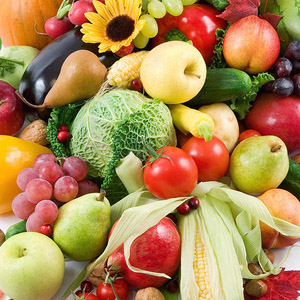| Gender | Male | Female |
|---|---|---|
| Age | Approximate amount | Approximate amount |
| 0-5 M | 4 | 4 |
| 6-11 M | 7 | 7 |
| 1-2 | 60 | 60 |
| 3-5 | 70 | 70 |
| 6-7 | 85 | 85 |
| 8-9 | 100 | 100 |
| 10-11 | 120 | 120 |
| 12-14 | 150 | 150 |
| 15-17 | 160 | 160 |
| 18-29 | 150 | 150 |
| 30-49 | 150 | 150 |
| 50-69 | 150 | 150 |
| 70- | 150 | 150 |
| Pregnant | 150 | |
| Lactation | 150 |
| Gender | Male | Female |
|---|---|---|
| Age | Approximate amount | Approximate amount |
| 0-5 M | 4 | 4 |
| 6-11 M | 7 | 7 |
| 1-2 | 25 | 25 |
| 3-5 | 30 | 30 |
| 6-7 | 40 | 40 |
| 8-9 | 45 | 45 |
| 10-11 | 55 | 55 |
| 12-14 | 70 | 65 |
| 15-17 | 80 | 60 |
| 18-29 | 75 | 60 |
| 30-49 | 75 | 65 |
| 50-69 | 75 | 65 |
| 70- | 75 | 65 |
| Addition for Pregnant | 0 | |
| Addition for Lactation | 0 |
The nutritionally important vitamin K are menaquinone-4 (vitamin K2) widely included in animal foods and menaquinone-7 produced by Bacillus Nattou. Vitamin K activates prothrombin and other clotting factor in the liver and promote blood clotting. Osteocalcin present in the bone is a vitamin K dependent protein and vitamin K activates it to adjust the bone formation. If vitamin K is insufficient, blood clotting is delayed. However, vitamin K deficiency does not occur in the normal diet.
It is not known that how much the vitamin K produced by intestinal bacteria and the vitamin K synthesis in the living tissue meets the requirements of vitamin K in human, it is known that the vitamin K does not meet the requirements of the living from the report, Vitamin K deficiency from dietary vitamin K restriction in humans.
Vitamin K deficiency leads to blood clotting delay. In clinical, surgery, oral warfarin administration and long-term administration of antibiotics may leads to vitamin K deficiency. However, it is not known that how much vitamin K intake is needed to activate blood clotting. It is considered that the required amount of vitamin K for prevention of fracture is greater than the required amount for activation of blood clotting factor.
Although the approximate amount of vitamin K has been set based on the report that the subjects are 10 Japanese young men, Vitamin K deficiency from dietary vitamin K restriction in humans in 2010 edition, the report has been denied in 2015 edition because of the few subjects.
In National Health and Nutrition Survey in 2010 and 2011, the average intakes of vitamin K are 185 µg/d and 280 µg/d, respectively. In Japanese, the intake of vitamin K depends on Natto and the vitamin K intakes are 336.2 ± 138.2 µg/d in Natto in eater and 154.1 ± 87.8 µg/d in non-Natto eater according to the report, Vitamin K Content of Foods and Dietary Vitamin K Intake in Japanese Young Women. The approximate amount of vitamin K has been set to 150 µg/d based on the report.
Although it is considered to elevate the approximate amount of vitamin K in elderly, it has been set to the same amount as in adults because of insufficient reports.
The approximate amount in child is extrapolated by estimating the body surface area with 0.75 square of the weight ratio. It is known that vitamin K is insufficient in newborn baby, therefore it leads to gastrointestinal bleeding a few days after birth and intracranial hemorrhage one month after birth. Therefore, oral administration of vitamin K are recommended immediately after birth in Japan. According to the recommendation, the approximate amount of vitamin K has been set to 4 µg/d by multiplying vitamin K concentration of human milk 5.17 µg/L by standard lactation amount 0.78 L/d in 0-5 months infant. It has been set to 7 µg/d in 6-11 months infant from view of the dietary intake.
There are few reports of vitamin K requirement in perinatal stage. It is considered that there is no difference of vitamin K requirement between pregnant and non-pregnant because it is difficult to pass through placenta for vitamin K, therefore it has been set to 150 µg/d. There is no reports that vitamin K is insufficient in lactation, therefore the approximate amount of vitamin K has also been set to 150 µg/d in lactation.
The toxicity due to high dose of vitamin K is not observed, therefore the upper limit has not been set.
br>
The Dietary Reference Intakes for Japanese (2015 edition) Fat-soluble vitamin (pdf) br>
The Dietary Reference Intakes for Japanese (2010 edition) Vitamin K (pdf)

